Place: Eden Park and the John Miller Burnam Classics Library, UC.
When: November 3. 1. Dedication ceremony in Eden Park at 10:00 am; 2. Exhibition in the Burnam Classics Library after the ceremony.
Exhibition and Dedication Ceremony: In connection with the dedication of the new She-Wolf nursing Romulus (the eponymous founder of ancient Rome) and Remus in Eden Park on November 3, 2023, at 10:00 am (rescheduled from October 20), the John Miller Burnam Classics Library is hosting an exhibition featuring ancient texts about the story underlying the statue, Roman original coins depicting the scene, and photos and a video of the making of the new statue in Tuscany, Italy, before its transport to Cincinnati, and posters with newspaper clippings and other historical materials from the late 1920s and early 1930s concerning the gift of the statue to the City of Cincinnati, the gifting of a “wrong” baby wolf, the explanation of its location in Eden Park, and much more.
Parking: Please plan to visit the Burnam Library after the dedication ceremony. Parking in Cincinnati is always an issue because there are few public transportation options. For the dedication ceremony, plan to arrive at 9:30 am and park at the Krohn Conservatory and walk to Eden Park. For the exhibition, look for parking along Straight Street opposite the Blegen Library building and above, i.e., south of, McMillan Street at the top of Clifton Avenue. There is also metered parking along Clifton Avenue.
Lemonade: Will be served outside the Blegen Library building if it’s a sunny day; inside the lobby if it rains. While enjoying a glass of lemonade, note the Lupa with twins on a relief on the pylon beneath the roof and above the outside entrance to the Blegen building from the 1930s, inspired by the Eden Park statue, which in turn was modeled on a statue now housed in the Capitoline Museums in Rome, Italy.
The following are just a few of the items that will be featured in the exhibition in addition to ancient texts about the wolf story and ancient coins depicting it.
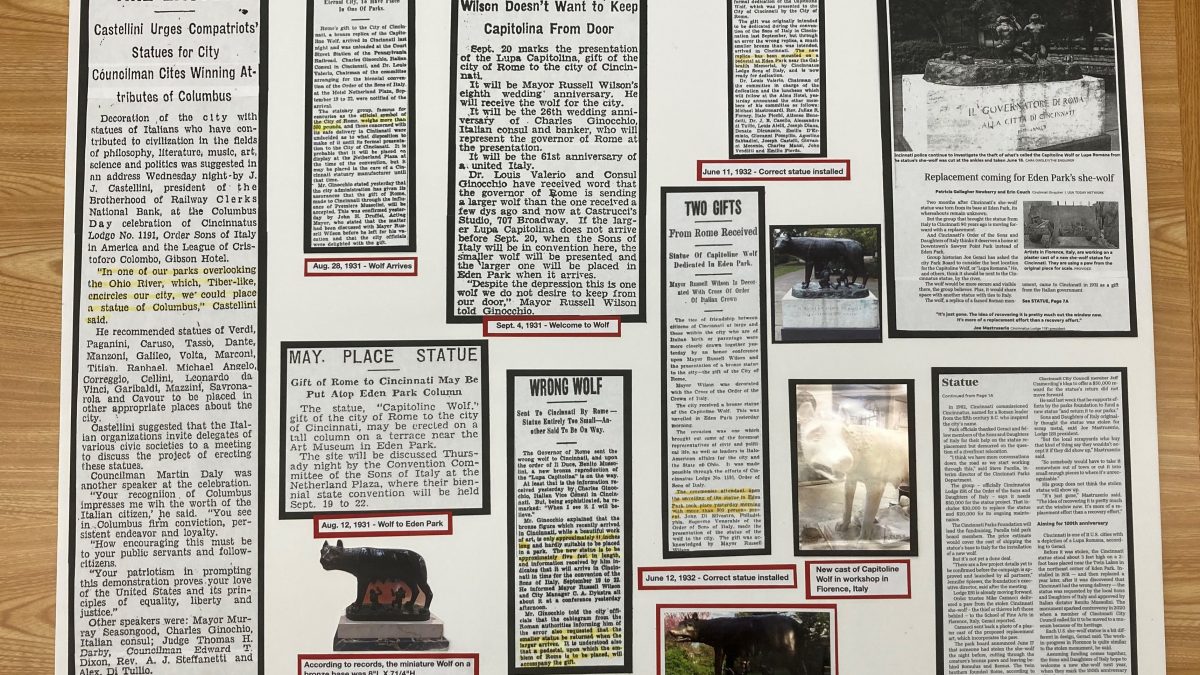
On loan from Joe Geraci, “The Sons and Daughters of Italy in America.”
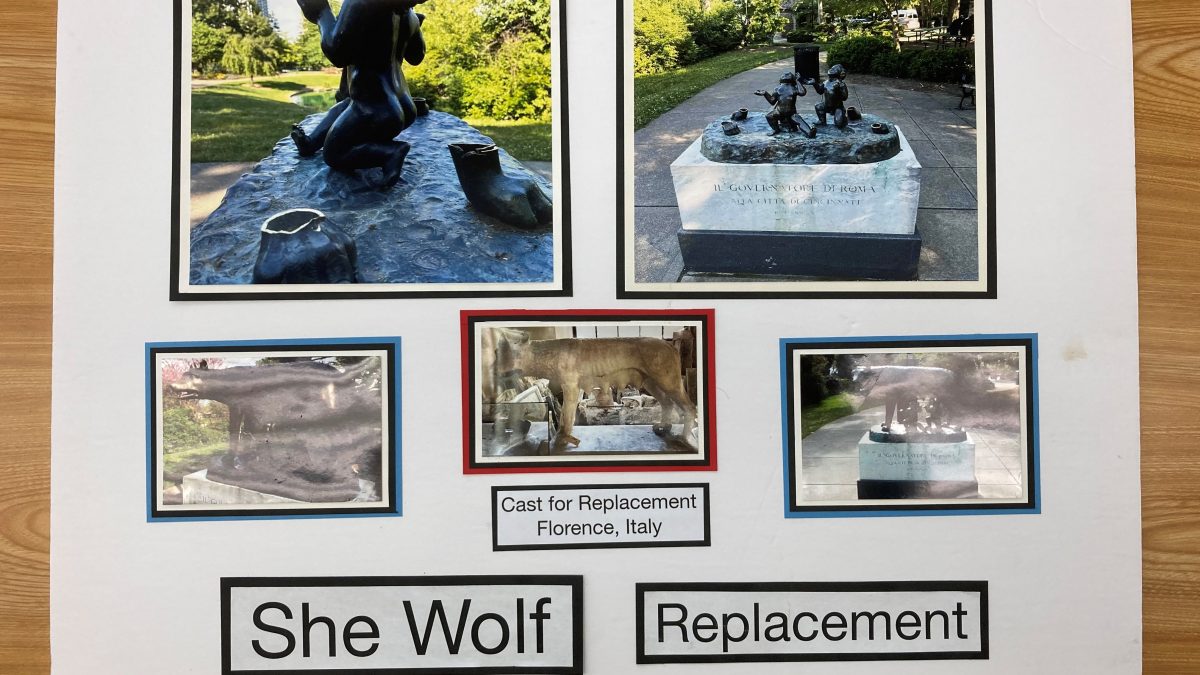
On loan from Joe Geraci, “The Sons and Daughters of Italy in America.”
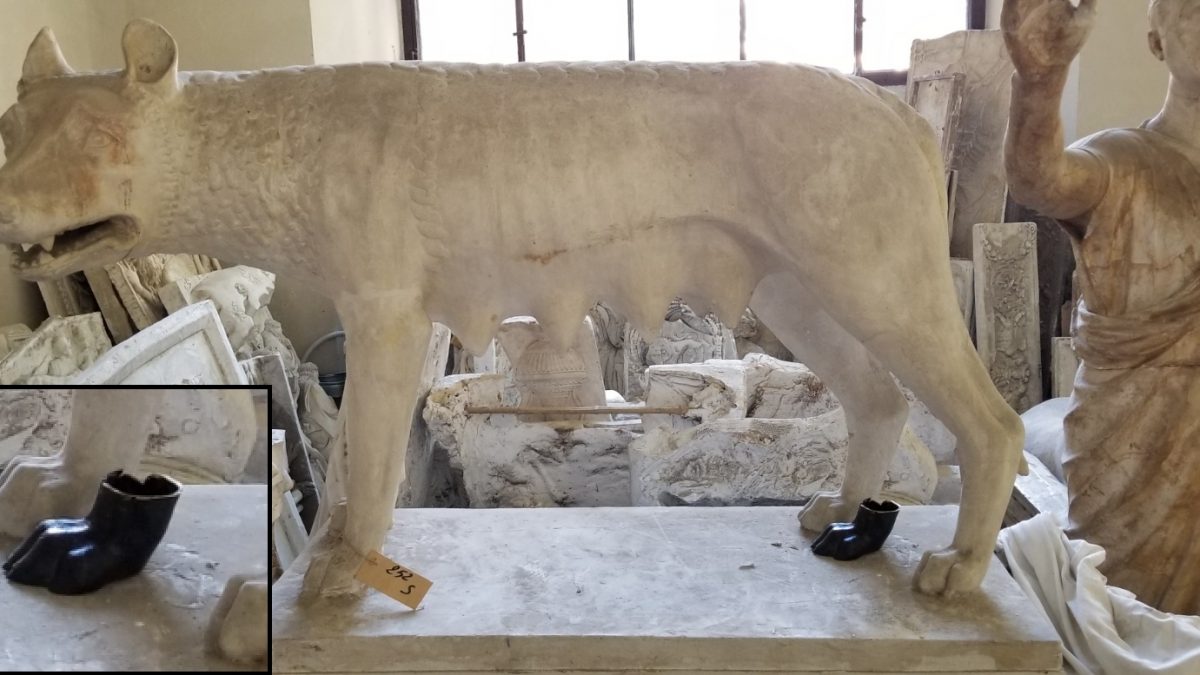
Plaster model in the workshop in Tuscany.
Photo by Joe Mastruserio, “The Sons and Daughters of Italy in America.”
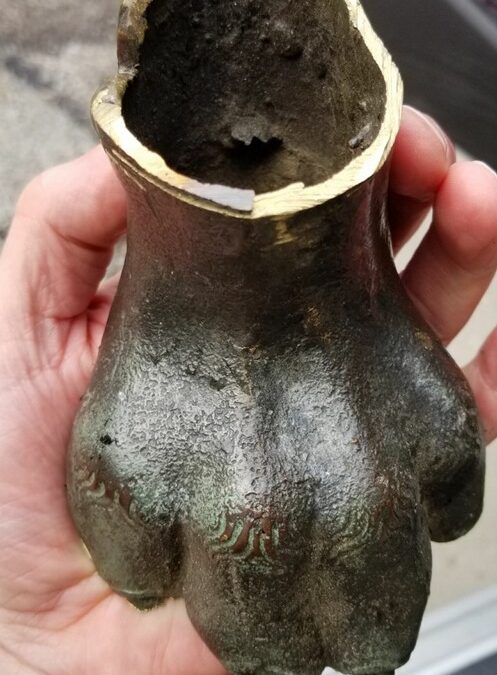
One of the original bronze paws still attached to the base with the twins was removed and brought to Italy as an aid in the construction of the new wolf.
Photo by Joe Mastruserio.
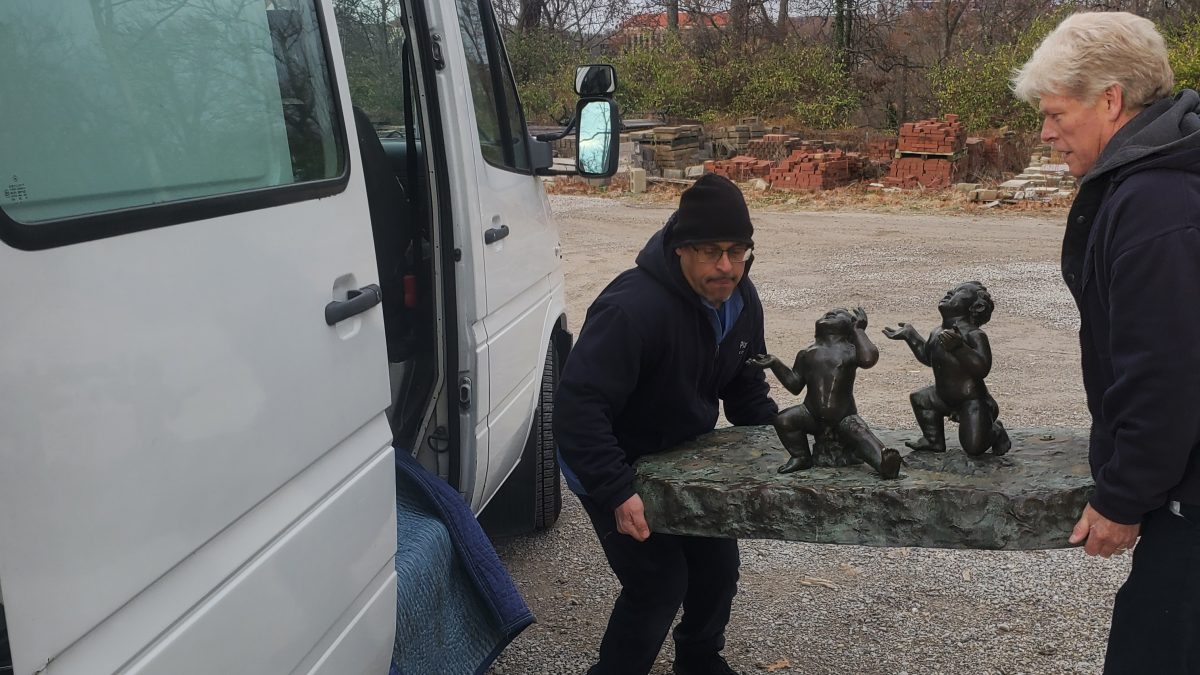
Transporting the base with Romulus and Remus to fit to the new she-wolf.
Photo by Joe Mastruserio.
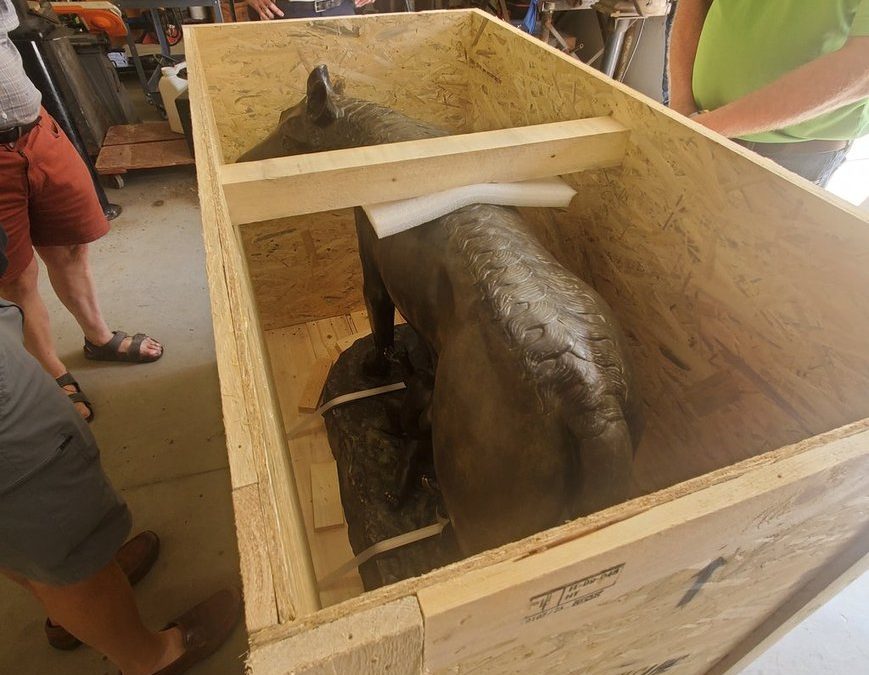
The bronze Lupa in a crate ready for transport to Cincinnati.
Photo by Joe Mastruserio.
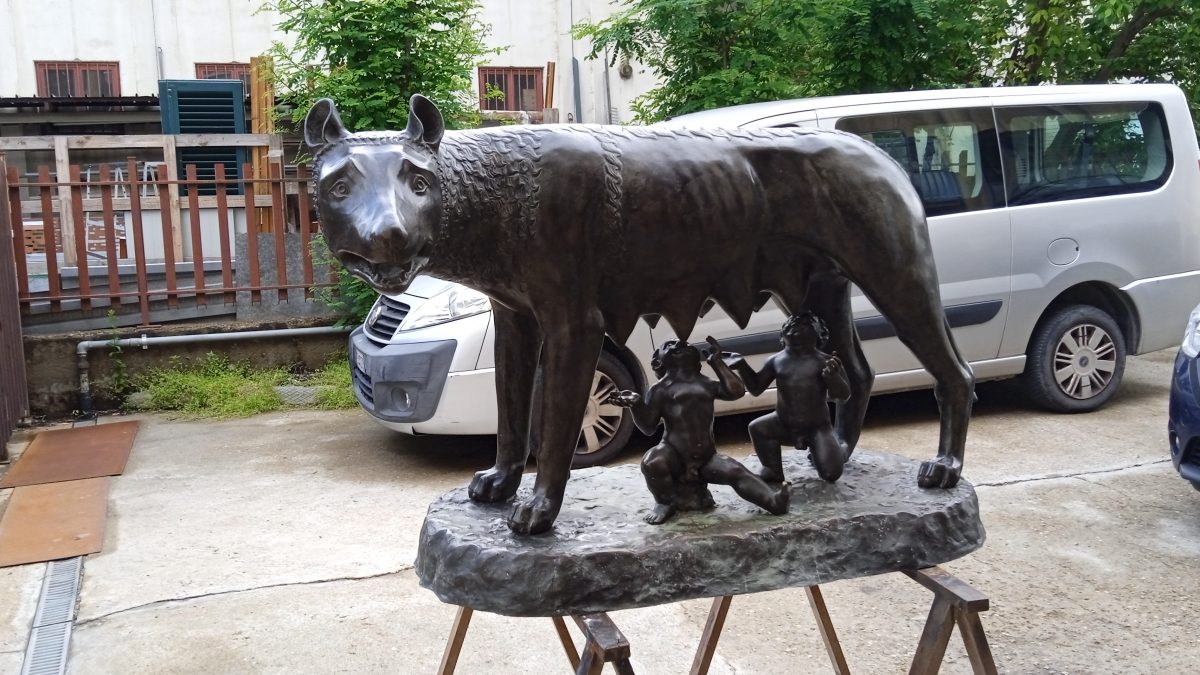
The finished new wolf together again with her boys.
Photo by Joe Mastruserio.
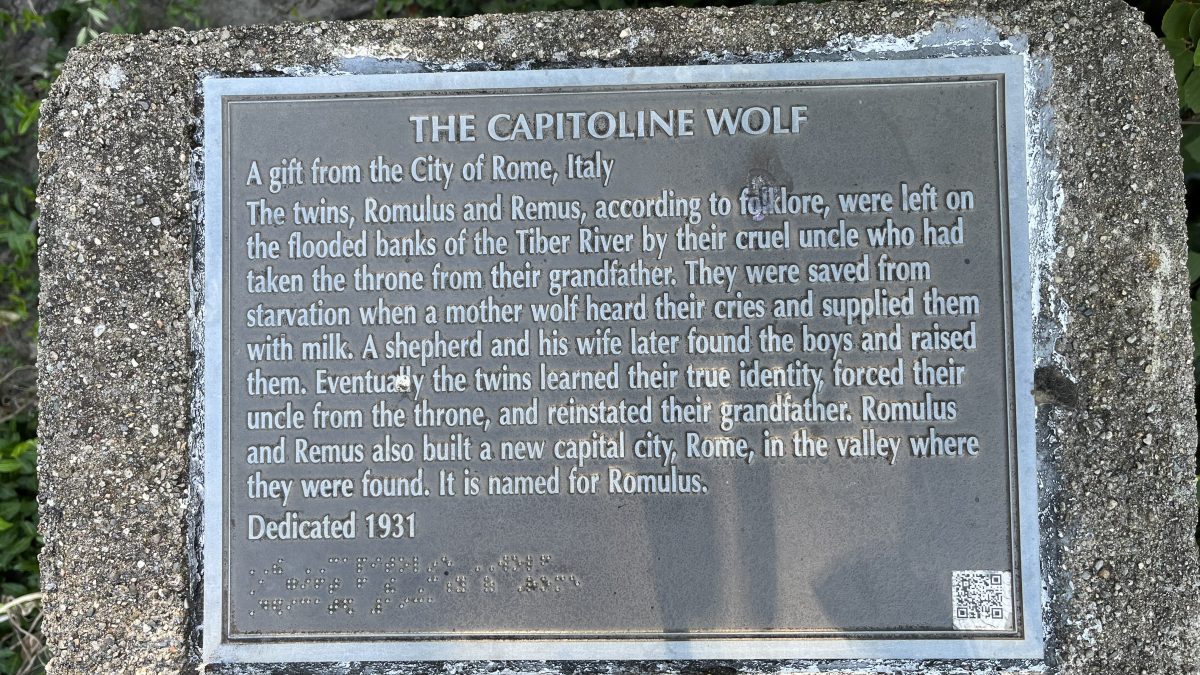
The story behind the wolf and twin boys. Dedication plaque.
Photo by Joe Mastruserio.
“The story persists that when the floating basket in which the children had been exposed was left high and dry by the receding water, a she-wolf, coming down out of the surrounding hills to slake her thirst, turned her steps towards the cry of the infants, and with her teats gave them suck so gently, that the keeper of the royal flock found her licking them with her tongue. Tradition assigns to this man the name of Faustulus, and adds that he carried the twins to his hut and gave them to his wife Larentia to rear” (Livy, Book 1).
“…the mother wolf lying stretched out in the green cave of Mars; around her teats the twin boys hung playing, and suckled their dam without fear; with shapely neck bent back, she fondled them by turns, and molded their limbs with her tongue” (Virgil, Aeneid, Book 8).
“A she-wolf which had cast her whelps came, wondrous to tell, to the abandoned twins: who could believe that the brute would not harm the boys? Far from harming, she helped them; and they whom ruthless kinsfolk would have killed with their own hands were suckled by a wolf! She halted and fawned on the tender babes with her tail, and licked into shape their two bodies with her tongue. You might know they were scions of Mars: fearless, they sucked her dugs and were fed on a supply of milk that was never meant for them. The she-wolf (lupa) gave her name to the place, and the place gave their name to the Luperci” (Ovid, Fasti II).
“Now there was a wild fig-tree hard by, which they called Ruminalis, either from Romulus, as is generally thought, or because cud-chewing, or ruminating, animals spent the noon-tide there for the sake of the shade, or best of all, from the suckling of the babes there; for the ancient Romans called the teat “ruma,” and a certain goddess, who is thought to preside over the rearing of young children, is still called Rumilia, in sacrificing to whom no wine is used, and libations of milk are poured over her victims. Here, then, the babes lay, and the she-wolf of story here gave them suck, and a woodpecker came to help in feeding them and to watch over them” (Plutarch, Parallel Lives: Romulus IV).
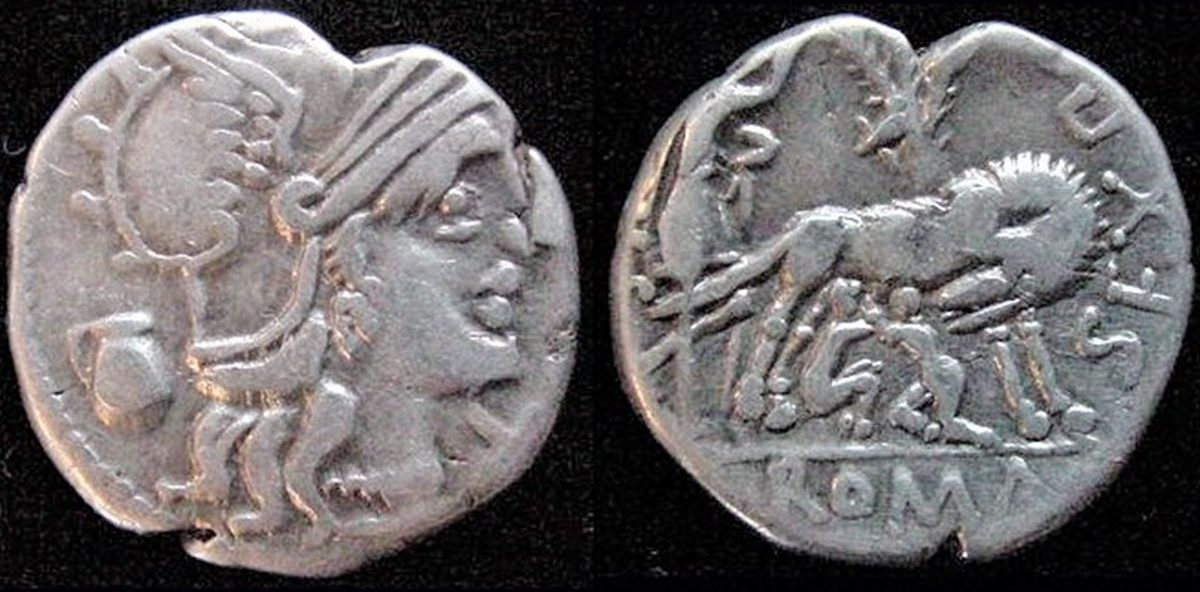
Sextus Pompeius Fostlus, AR Denarius, Rome mint. 137 BCE. The fig tree that gave shade to the animals is represented behind the wolf figure as is the woodpecker who brought berries to the children (see Plutarch’s account above).
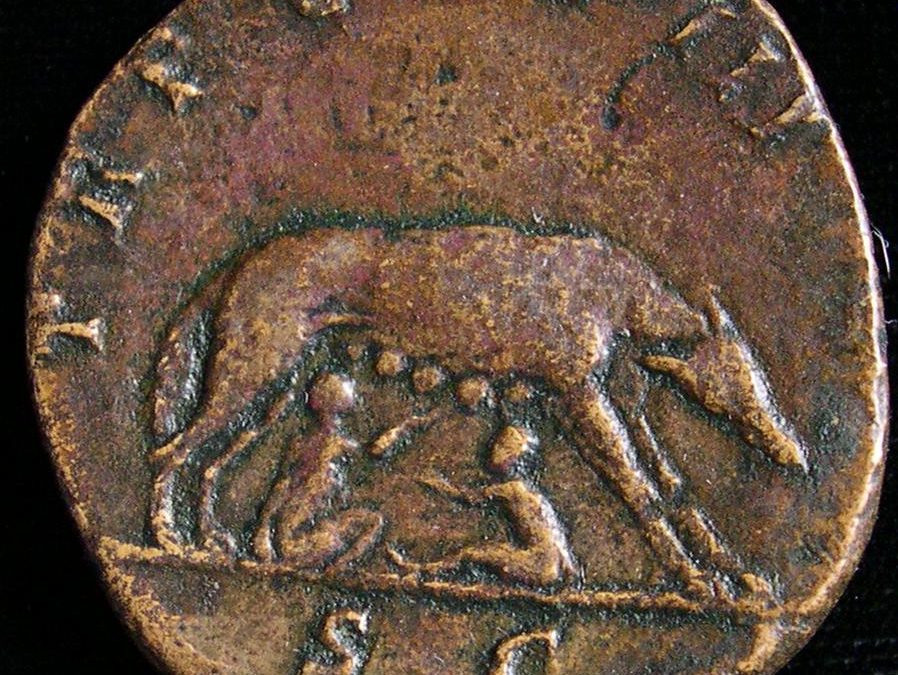
Antoninus Pius, 138-161 CE. AE Sestertius, Rome mint, ca. 140 CE.
